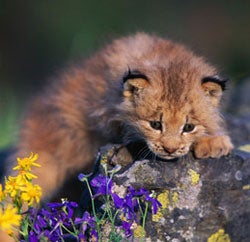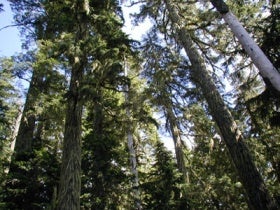This post was co-authored by Kritee, Senior Scientist, International Climate; Richie Ahuja, Regional Director, Asia; and Tal Lee Anderman, Tom Graff Fellow – India Low-Carbon Rural Development
National Geographic’s May cover story, “Feeding 9 billion,” offers valuable insights into how to feed a growing global population while reducing agriculture’s environmental impacts. But it omits some key connections with a critical issue: climate change.

Drought in the U.S. causes withering of corn. (Photo credit: Ben Fertig, IAN, UMCES)
As the Food and Agriculture Organization recently documented in great detail, climate change is likely to fundamentally alter the structure of food systems around the globe. With about 43% of the world’s population employed in agriculture, it’s vital that farmers have the knowledge and tools they need both to adapt to climate change and to help mitigate it.
Author Jonathan Foley, who directs the University of Minnesota’s Institute on the Environment, lays out several steps for “Feeding 9 billion.” Though he starts by acknowledging that agriculture emits “more greenhouse gases than all our cars, trucks, trains, and airplanes combined,” he doesn’t explicitly mention how his plan relates to a changing climate.
The first of his steps – halting conversion of additional forests and grasslands to agriculture – is crucial to stopping climate change, given the vast quantities of greenhouse gases released in these conversions. As the latest Intergovernmental Panel on Climate Change (IPCC) report on mitigation noted, protecting forests and increasing carbon content of the soils can decrease global emissions by as much as 13 gigatons CO2eq/year by 2030 – more than a quarter of current annual global emissions.
Foley also highlights the need to reduce meat consumption, because only a very limited portion of calories consumed by animals yield edible food for humans, and to reduce food waste. According to the IPCC, these consumer-level steps have the potential to decease agricultural emissions by 60% below the current trajectory. While Foley didn’t acknowledge these mitigation potentials, we agree that these are important steps to feeding the world’s population and protecting our environment.
But it’s his steps calling for improving productivity – both by growing more food on existing farms, and by using fertilizer, water and energy more efficiently – where the interactions with climate are more complex and need special attention.
Climate adaptation and resilience in agriculture
Foley rightly points out that to feed the world’s future population, more food needs to grow on existing farms. However, he doesn’t note that some of the effects of climate change – droughts, floods and heat waves in many parts of the world – are already reducing crop yields, and these effects and their consequences are expected to worsen.
The IPCC’s recently published 5th Assessment Report on adaptation concludes that:
- Climate change is already negatively affecting yields of crops and abundance of fish, and shifting the regions where crops grow and fish live
- Future changes in climate will increase competitiveness of weeds, making it difficult and more expensive to control them
- By 2050, changes in temperature and precipitation alone will raise global food prices by as much as 84% above food prices projected without these two climatic factors
- Major grains like wheat, corn, and rice could see as much as a 40% decrease in yield from a 20C increase in local temperatures. That’s because of the changing rainfall frequency and intensity, unpredictability and irregularity of growing seasons, and higher ozone levels that often accompany high CO2 levels
To deal with these consequences and ensure food security and livelihoods, adaptation to climate change is essential. Indeed, adopting carefully chosen adaptation and resilience measures could improve crop yields as much as 15-20%. The IPCC recommendations include:
- Altering planting/harvesting dates to match the shifting growing seasons
- Using seed varieties that might be more tolerant of changing climatic patterns
- Better managing water and fertilizer use

A farmer training session, led by EDF’s partner NGO in India (Photo credit: Accion Fraterna)
Achieving high yields requires enabling farmers all over the world to adapt, build and restore the resilience of agricultural ecosystems in the face of continued climate change. Given that many farmers in developed countries have already reached what are currently maximum possible yields, it’s particularly urgent to work with farmers in the developing world.A vast majority of these farmers in developing countries own small-scale farms (less than two acres in size) and have limited resources, and as a result are on the frontline of experiencing the unfolding impacts of climate change. These farmers are already growing the majority of the world’s food – more than 90% of the world’s rice, over 65% of its wheat and 55% of its corn. Notably, as opposed to our recommendations for farmers in the developed countries, some of them might need to increase their fertilizer use to achieve better yields as opposed to decreasing it. Feeding a world of 9 billion thus requires facing the disproportionate effect that climate change has on the 2 billion people who depend on small-scale farms for their livelihood.
Barriers to climate adaptation & mitigation in agriculture
The latest IPCC report also noted that the “nature” of the agriculture sector means:
“There are many barriers to implementation of available mitigation options, including accessibility to … financing, … institutional, ecological, technological development, diffusion and transfer barriers.”
We couldn’t agree more.
Many farmers, especially small scale land-owners in developing parts of the world, lack access to reliable scientific information and technology. In some cases, relevant information has not even been generated.
An Indian peanut farm where EDF is monitoring yield and greenhouse gas emissions. (Photo credit: Richie Ahuja)
For example, small-scale rice farmers in Asia lack access to information enabling them to determine what amounts of water, organic and synthetic fertilizer will optimize yields while also minimizing release of the greenhouse gases methane (which is 84 times more potent than carbon dioxide in the first 20 years after it is released), and nitrous oxide (which is nearly 300 times more potent than carbon dioxide). EDF is working with the Fair Climate Network in India and with Can Tho University and other partners in Vietnam to help generate that information and facilitate its use by farmers.
More generally, agricultural institutions at all levels – international, regional, national and local – need to work closely with farmers to learn and promote evidence-based, locally appropriate agricultural adaptation and mitigation technologies and practices. Farmer access to finance can further help improve the adoption rate of these technologies. Larger investments in farming infrastructure and science from government and private sector also need to be channeled to promote food security through low-carbon farming.
Our food system cannot achieve high yields without building and restoring the resilience of agricultural ecosystems, and the system won’t be sustainable if agriculture doesn’t do its part to mitigate climate change.
To feed 9 billion people, we must overcome barriers to reducing climate change’s effects on agriculture, and agriculture’s effect on climate.
This post first appeared on EDF Talks Global Climate blog













